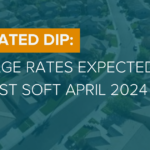As a fix and flip or buy and hold real estate investor, it is incredibly important to understand the inner workings of the real estate market. Without a strong understanding of the numbers and the state of the market, there is no way for you to know which properties are good investments and which ones will flop.
The first step you should take when choosing your next project is determining the state of the local market. To do that, you need be able to know how to read the market and understand what the data means. This article will introduce you to the four stages of the real estate cycle and give you tips on starting to identify which phase a particular market is in.
Introduction To The Real Estate Cycle
There are four key cyclical phases that the real estate market rotates through. This applies to both the national market and your local market, and the two aren’t necessarily in sync; any experienced investor knows that the market in one neighborhood can flourish while houses sit on the market for months the next town over.
Even in the same area, there may be different markets in different stages of the cycle: a city may have a massive demand for commercial development but little to no demand for residential units and vice versa.
Regardless of type, markets tend to go through the same four-phase cycle of recovery, expansion, hyper supply, and recession.
Recovery
A market in recovery often feels like a market in recession; occupancies are low, rental rates aren’t outpacing inflation, and there is no new construction. The key difference between recovery and recession is that things are no longer getting worse.
If you can identify it, a market in recovery can be a great opportunity for investing. Properties are still priced low and a market in the recovery stage will probably be back on its feet within two to four years. However, trying to fix and flip in the recovery stage is inherently riskier due to the increased time it will take to sell the property.
Most hard money loans allow twelve months for repayment and there is no guarantee that you will be able to sell for a good price in that time frame. However, if you have the capital to buy and hold, you can invest in the property and wait until the market is back on its feet to sell.
Expansion
This phase of the market is much easier to recognize; demand and occupancy rates are increasing. Rents are increasing beyond the rate of inflation and new construction is feasible.
For fix and flip investors, the early part of this phase is likely the most profitable time to invest. Properties are still substantially discounted but prices are steadily rising; if you buy and flip within a year, not only will your renovations add value but the core property will be worth a lot more as well.
Even when property prices begin to stabilize, a smart investor can still have a highly profitable fix and flip in this phase. The potential return on investment will decrease over time but will still be positive with the right renovations. At some point in this phase, though, supply and demand will reach equilibrium, and that is when an investor should be wary; the market may be moving into the next phase: hyper supply.
Hyper Supply
At this point, vacancies are rising and rent growth is declining; there are more units available than there are buyers. Just as recovery looks similar to recession, hyper supply looks similar to expansion. The market may still look healthy because rent rates can be positive at the beginning of this phase. However, the oversupply of space will result in the eventual decrease of rent growth and property values.
You do not want to buy into a market during this phase. If you already own an investment property when this phase begins, you have two options: sell as quickly as possible, even if it means dropping the price, or plan to sit tight until the market eventually turns around and enters expansion. The best strategy depends on your personal financial situation and goals.
Recession
A market in recession will have high vacancies and negative or slow rent growth (below the rate of inflation). Property owners looking to sell will typically lower their asking prices in an attempt to get rid of unwanted properties.
If you have the time and money to hold onto a property for a long time, this is the optimal time to buy. Because there are so many properties on the market and so few buyers, the recession phase allows investors to purchase distressed properties at the lowest possible price. However, there is no way to know how long it will take for the market to reach the expansion phase and if you need to liquidate your asset at some point in between recession and expansion, it will be very difficult for you to do so.
Unless you are certain that you have the resources to hold onto a property for as long as it takes to turn a profit, it may be wiser to wait until the market shows signs of recovery before you start taking advantage of the huge discounts on these properties.
Indicators of Growth
Of course, identifying the phase a particular market is in is more difficult in reality than on paper, and it may not always be clear to an investor what the rental growth trends are. Fortunately, there are a few different ways to predict future market growth.
Employment
One of the clearest indicators of a growing real estate market is a growing job market; people like to live close to the office to minimize travel time so if new positions are being created and filled it is likely there will be a growing demand for homes in that area.
On the flip-side, if employment is decreasing, the real estate market is at risk of a downturn. People will look for new jobs when they are laid off and may want to move away, and it is less likely that families will move to an area without job opportunities.
To figure out what the employment rates are in an area, you can contact a local government office to ask for the latest numbers. You can also check out job postings for the zip code on sites like Indeed or Linkedin to see how the postings compare to similar towns elsewhere in the county or state.
Supply
If you know how long houses are sitting on the market, you can learn a lot about that real estate market’s health. An average of six months indicates a healthy market; any less and the market may be in the early expansion or late recovery phase, any more and the market may be going through hyper supply, recession, or early recovery.
The National Association of Realtors releases monthly reports on local real estate markets so you can get a sense of how long homes are staying on the market and what the selling prices are. Realtor.com has a great tool that shows you the data by county so you can do research on your area of interest.
Finding Hot Markets
While doing your own research is valuable because it allows you to get a jump on trends and invest in great neighborhoods before other investors realize they’re great, there are short-cuts available. Different blogs are constantly evaluating the hottest up-and-coming real estate markets and putting lists together for investors.
Since this information is publicized so openly, you may not get the best deals in these “hot” locations, but odds are the market is going to grow and you will still have a profitable flip. For investors who don’t feel comfortable analyzing data on their own or who don’t have the time to research a multitude of locations, you can use these lists as a way of narrowing down your search. You should still look into the factors listed in this article to ensure that the bloggers are right and figure out which neighborhoods are the best, but these lists can be very valuable starting points.
Time Magazine put together this list of the 20 US metro real estate markets with the best five-year trend forecasts – including locations in New York, New Jersey, Maryland, and Florida.
Every real estate investor wants to be sure that they will make money on their fix and flip investment, and one of the best ways to increase your confidence in a project is to forecast the viability of your region. By understanding the real estate cycle and figuring out how to identify what stage a particular market is in, you can get a strong sense of market growth and decide whether or not the area is worth an investment.







0 Comments